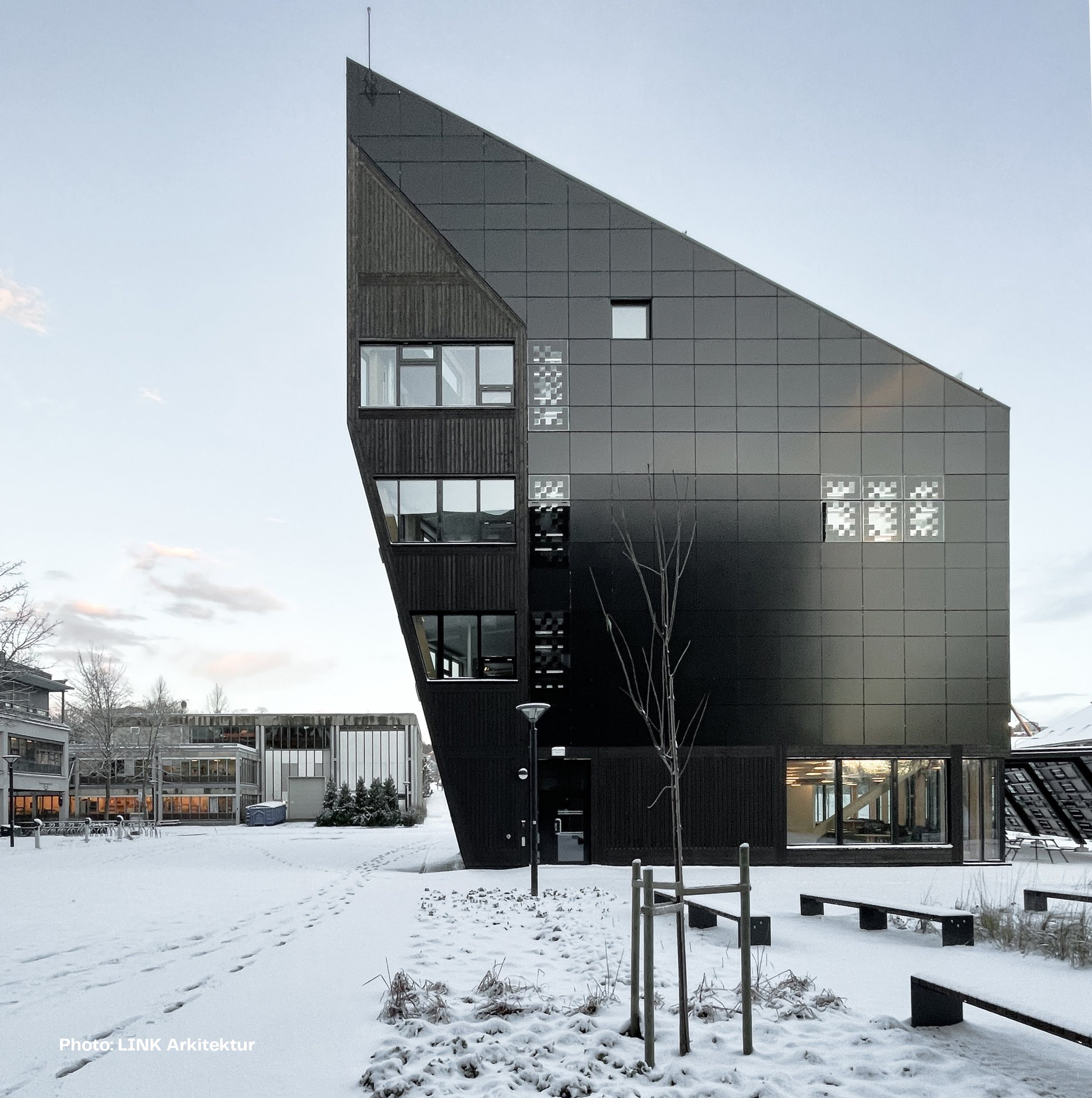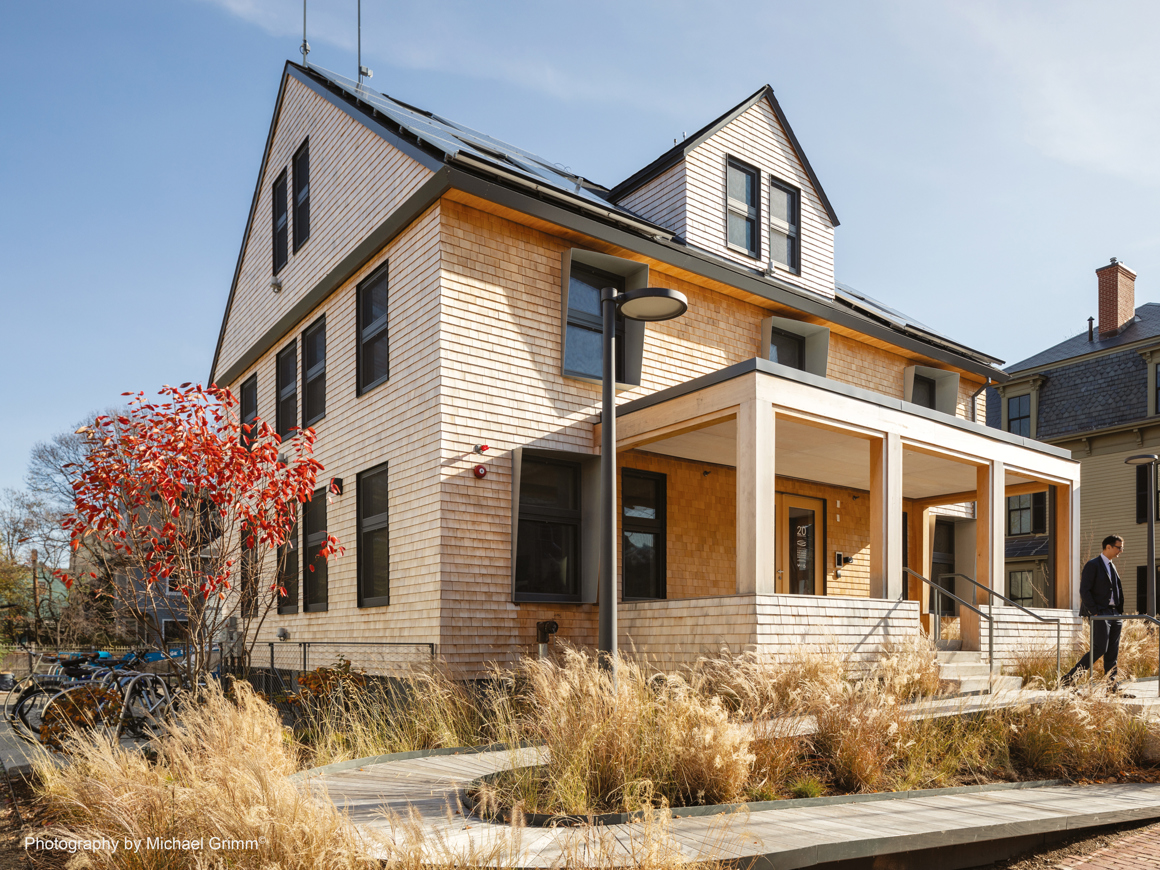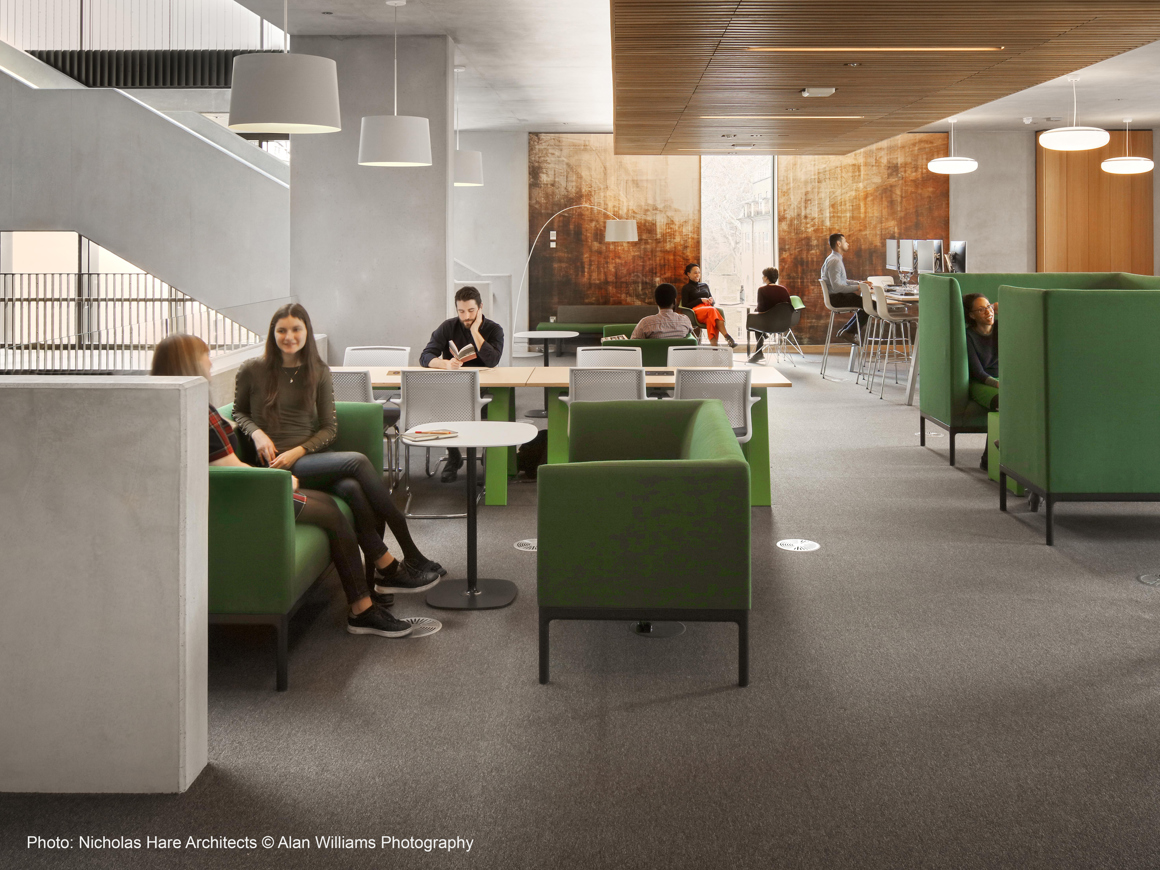When considering natural ventilation strategies, such as cross ventilation and passive stack ventilation, for your building, there are several factors that should be taken into account. These strategies use natural forces to regulate the internal air temperature and circulate air to and from an indoor space, and the best fit depends on internal thermal loads, the positioning of windows, and the design of the building.
From start to finish - we are happy to assist you!
WindowMaster is committed to help you actualise your vision and select the optimal ventilation approach for your next project. We therefore offer comprehensive support and guidance throughout the entire process, from initial planning to final implementation.
The basic facts about cross ventilation and passive stack ventilation
Cross ventilation involves creating air inlets on opposite sides of the building to allow fresh air to flow through. It is effective in areas with regular wind patterns, and you should choose cross ventilation if your building is oriented to take advantage of prevailing winds. This strategy is particularly useful in moderate to windy climates. Passive stack ventilation relies on the principle of warm air rising and cool air entering lower openings. It is effective in utilizing the stack effect to promote natural airflow, and you should choose this strategy if your building has vertical shafts or well-designed interior pathways that can channel warm air upwards. Passive stack ventilation works well in various climates, including both cold and hot regions. In some cases, an approach that combines more strategies might be suitable, optimising natural ventilation benefits based on the building's unique characteristics. Consulting with ventilation experts and considering simulations or modelling can provide valuable insights into which strategy aligns best with your building's needs and goals. A variety of natural ventilation strategies can be integrated into your building design.
Get insights into the different strategies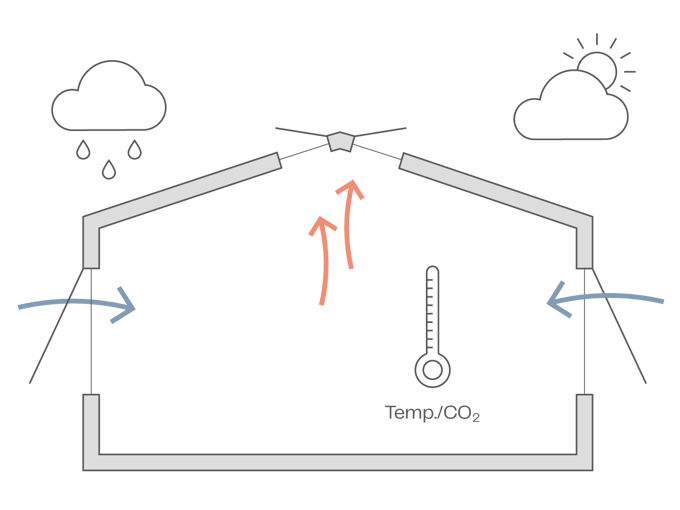
5 things to consider when deciding whether cross ventilation and passive stack ventilation are the right fit for your project
-

Consider the prevailing wind directions and the building's orientation
-

Evaluate the availability of vertical spaces or shafts for passive stack ventilation
-

Analyse the local climate, temperature variations, and humidity levels
-

Take into account the intended use of the building and the comfort requirements of occupants
-

Assess the feasibility of integrating these strategies within your building's design and layout
Benefits of both strategies
These natural approaches allow you to avoid mechanical ventilation, and they can help reduce energy consumption while effectively improving air quality. Because these types of ventilation are wind- and buoyancy-driven, you get a more energy-efficient ventilation system. Additionally, these ventilation approaches do not rely on a mechanical system, which means that you can minimise noise disturbances. Instead, the cross ventilation and passive stack ventilation systems operate quietly but effectively. Cross ventilation and passive stack ventilation also offer a great night cooling system, also called night cooling ventilation. Throughout the day, a building absorbs heat gains from people and equipment inside the building as well as from the sun, and in order to release this heat, the ventilation system will open its envelope to release the warm air and allow for the cool external air to enter. As a result, you can avoid using a mechanical cooling system during the day when the energy costs are at their highest.
Discover the benefits of night cooling ventilation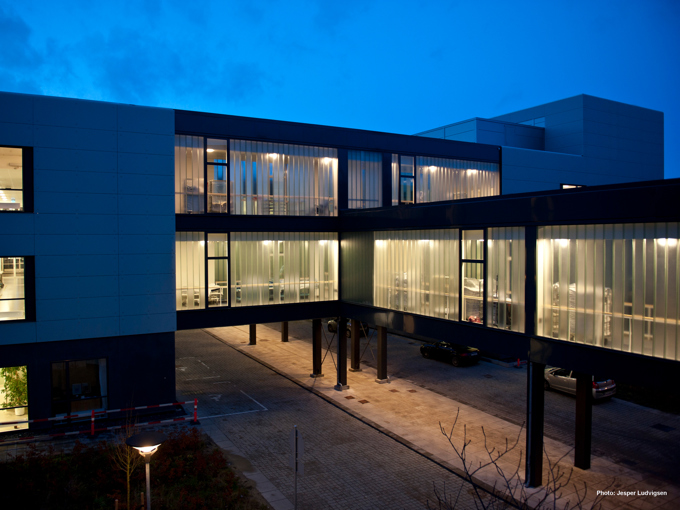
What ventilation strategy is best for you?
Each ventilation strategy has its benefits, and the ideal choice depends on the design of the project in question. If you install cross ventilation and passive stack ventilation, you get a solution that is dependent on wind and thermal buoyancy. This process also depends on how the windows that release and take in the air are placed compared to each other. Cross ventilation works by creating a current of air that occurs when having open windows on each side of a room. An overpressure will occur on the side of the building that is facing into the wind, whereas a low pressure will occur on the other sheltered side. As a result, air will flow through the building and create an improved air quality. The ideal choice of ventilation also depends on the project in question. Some areas can require a certain type of ventilation, and therefore, you should consider the room’s depth. For example, as a rule of thumb, the depth of a room should maximum be five times the height from floor to ceiling to use cross ventilation and passive stack ventilation. Cross ventilation is not optimal for windless locations, such as inner cities. Instead, wind-driven ventilation is great for more open spaces where you can be sure to make the most of the natural forces. Otherwise, you can choose our hybrid ventilation approach, which combines the very best of natural ventilation and a mechanical ventilation system.
Discover the many benefits of hybrid ventilation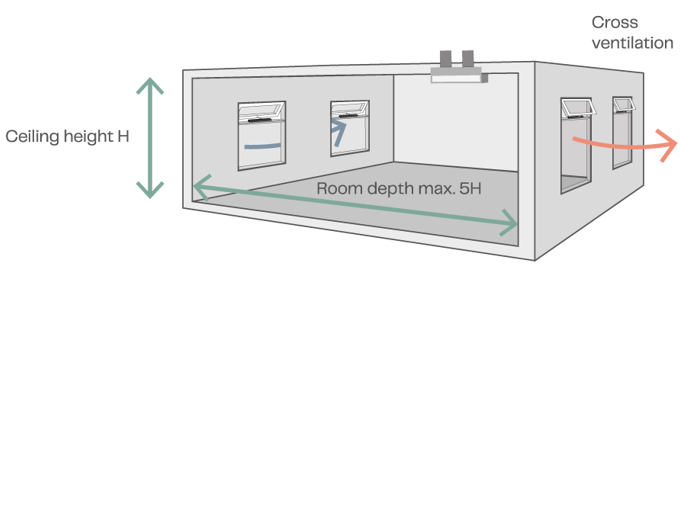
Automate your ventilation system
You can automate the passive stack ventilation or cross ventilation for enhanced convenience and efficiency. With the advancement of technology, automating your ventilation system offers a range of benefits. By integrating sensors, controllers, and smart devices, you can create a sophisticated and responsive system that adjusts ventilation based on real-time conditions. Automated ventilation systems can monitor factors such as temperature, humidity, and CO2 levels, ensuring optimal indoor conditions at all times. Additionally, these systems can be programmed to operate on schedules, adapting to different occupancy patterns and reducing energy waste during unoccupied periods. The automation also allows for remote monitoring and control, enabling you to manage and fine-tune your ventilation system from anywhere. Automating your ventilation system is not only more convenient, but it also maximises energy efficiency, improves indoor air quality, and creates a more comfortable and beneficial environment.

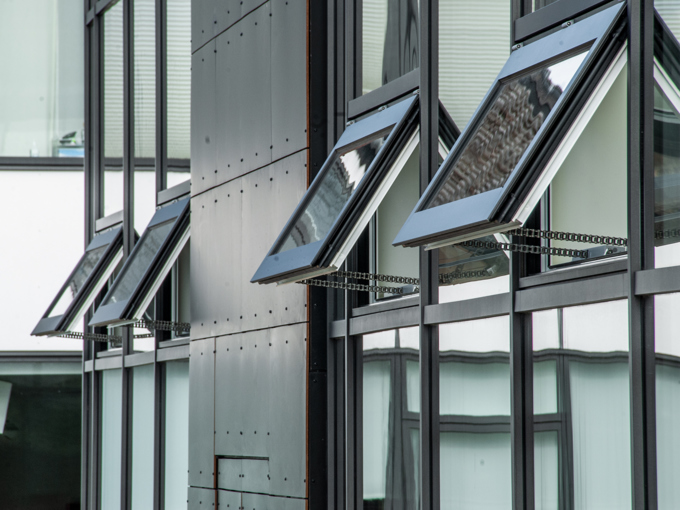
A natural approach with cross ventilation and passive stack ventilation
At WindowMaster, we develop natural ventilation solutions supporting the commercial building industry's reduction of CO2 emissions. By prioritising natural ventilation strategies, buildings can reduce their carbon footprint, conserve energy, and improve the indoor climate by using the forces of nature. Cross ventilation and passive stack ventilation align with modern design principles, promoting health and comfort for future generations through improved indoor environments.
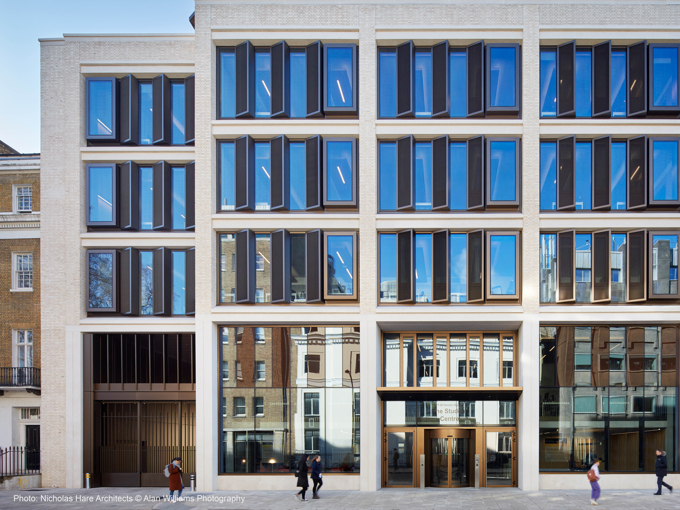
Project References
Let WindowMaster assist you with your upcoming project
Do you need assistance identifying the most suitable natural ventilation solution for your new-build or refurbishment project? Or would you like know more about the optimal maintenance of your ventilation system? Whatever your need is, WindowMaster’s dedicated team is here to assist you.
